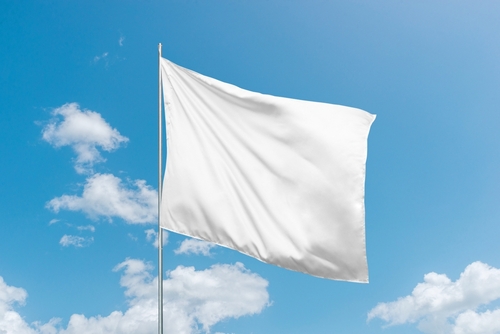No matter what products or services your company sells, color is an important branding element. Most companies select colors based on their brand attributes and the image they want to evoke in the target market. But what if your target market is located throughout the world? Colors have strong cultural connotations that may differ widely from one place to another. In a globalized world, understanding the global associations carried by different hues is more important for marketing leaders than ever before.
According to Interbrand, more than a quarter (26%) of the world’s 100 most valuable brands use blue as a dominant color in their logo. Companies that rely on blue to create a strong brand presence include IBM, GE, Intel, Nokia, HP, American Express and Gillette.
Because blue is a color readily found in nature, and reminds people of the sky, it is often considered to be a universally acceptable color. In many religions, blue is associated with peace or is believed to keep bad spirits away. In some parts of Eastern Europe, the color also has positive meanings – loyalty, virtue, and wisdom. Several African cultures associate blue with peace and love.
However, blue can also create a somber or sobering effect. Blue can make people in some Western and Asian cultures think of cold and icy winter days. In Iran, blue is a color of mourning. Blue is sometimes associated with authority or discipline – think of the many shades of blue used by police officers and military personnel.
Exactly half of the top 10 global brands have blue logos, making blue an extremely popular color for major world brands. However, blue is not nearly as popular for firms headquartered outside of North America and Northern Europe. The list of top 10 Japanese brands contains just one blue logo—Panasonic’s—among its top 10.
The color green is rarely found among the world’s leading brands. Just five out of the top 100 global brands—Google, eBay, Sprite, Heineken, and Starbucks—use green. And, for most of these companies, green is not a dominant color, but rather, used sparingly in combination with other colors.
Despite its lack of dominance among top international brands, green is actually one of the most positive colors that marketers can choose on a global scale. Long associated with nature in nearly every culture, green is linked to good health, life, and vitality in many places. In China, green is thought to repel evil. In the Muslim world, green is linked to spirituality, heaven, religion and God.
Starbucks, which ranked 97 out of the Top 100 brands in 2010, is the only top global brand that chooses green as its most dominant color. In contrast, the second most valuable Chinese brand, China Life, has a logo that is predominantly green.
How do other colors fare in the quest for global brand greatness? Although not everyone would consider it a true color, basic black was just as popular as blue, with 26 out of the top 100 brands—including companies such as Microsoft, Disney, Louis Vuitton and Apple—using black as their most prominent hue.
Attention-grabbing red was the next most popular shade for top global brands. While only one top 10 company—first-ranked Coca-Cola—chose red as its most dominant color, it was used by a total of 15 other companies in the top 100 brands throughout the world. In China, red is even more popular among leading brands, with exactly half of the country’s top 10 brands using this color.
What can you do if you’re stuck with a color that might not be received well in a given market? In general, the best guideline is not to avoid using colors entirely because of negative connotations but, rather, to design your campaigns with this information in mind. For example, while red has negative attributes in some contexts, choosing it for a “buy now” or other call to action is acceptable for nearly any target market. Similarly, a blue background may be calming, but use too much of it and you’ll risk boring your audience.
When selecting colors, use them in a strategic way for each market, to make your messages truly resonate with the intended audience.
Nataly Kelly is the chief research officer for Common Sense Advisory. For a complimentary copy of their “Global Marketer’s Guide to Color Selection,” email [email protected]
 Network
Network

